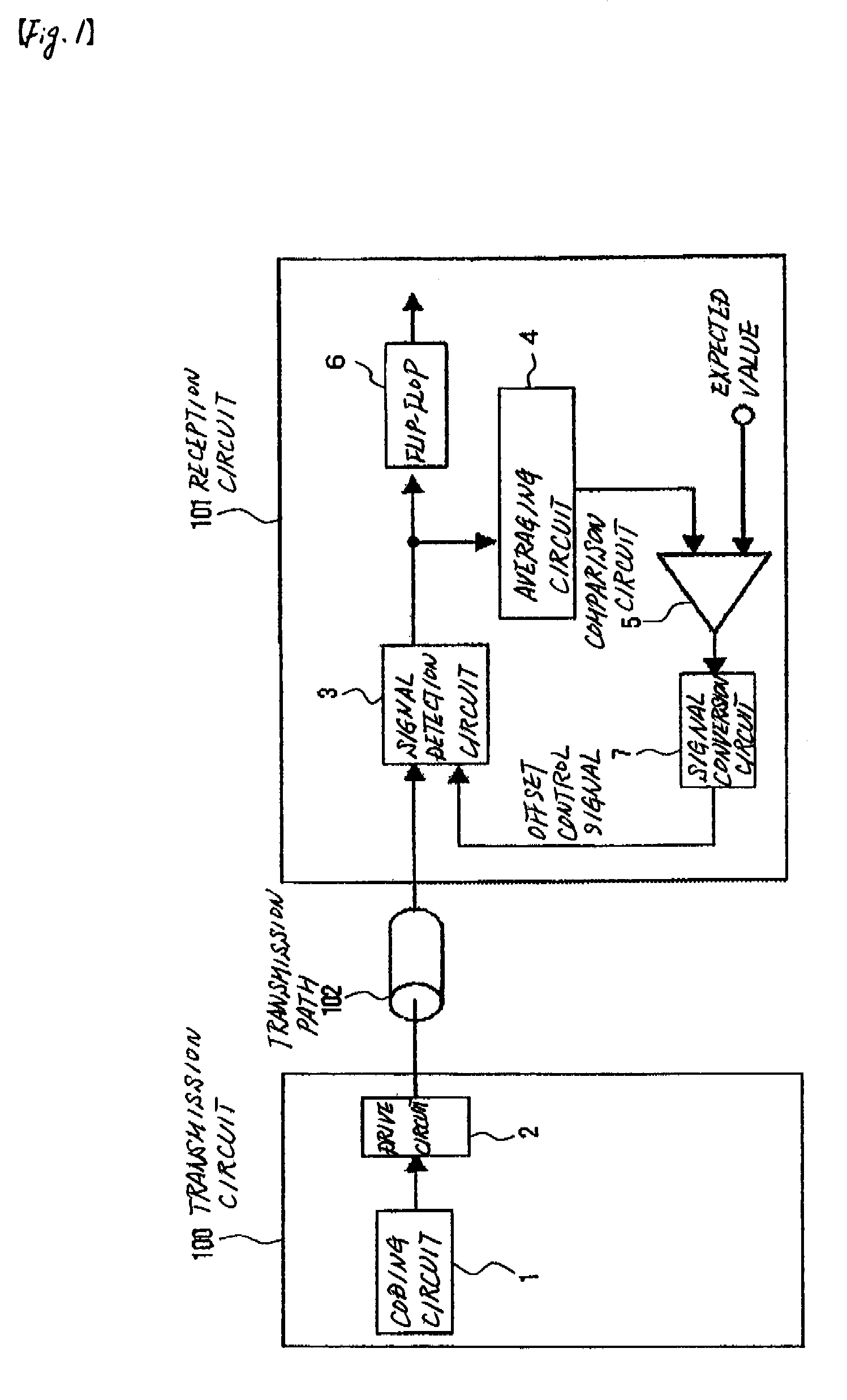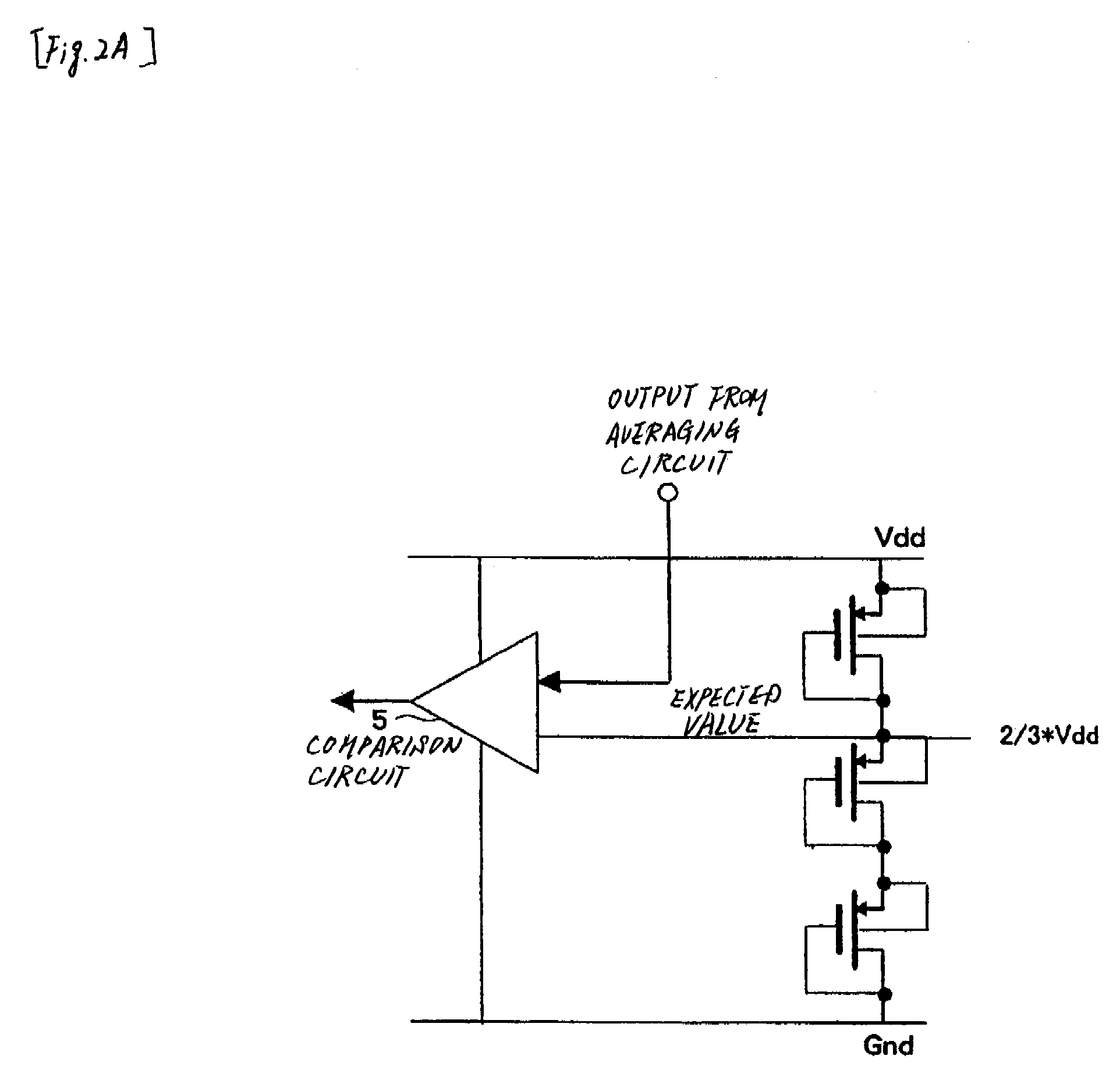Data transmission system
a data transmission system and data technology, applied in the field of data transmission systems, can solve the problems of reducing the effective communication speed, unable to realize the correction of offset voltage fluctuations, and exacerbate the false detection rate of low-amplitude high-speed received data, so as to prevent the increase or decrease of the circuit scal
- Summary
- Abstract
- Description
- Claims
- Application Information
AI Technical Summary
Benefits of technology
Problems solved by technology
Method used
Image
Examples
first embodiment
[0032]As shown in FIG. 1, the data transmission system of the first embodiment includes transmission circuit 100 for encoding and transmitting a data sequence that is the object of transmission and reception circuit 101 that is provided with a signal detection circuit for detecting a data sequence from a received signal.
[0033]Transmission circuit 100 is provided with: coding circuit 1 for encoding a data sequence that is the object of transmission and drive circuit 2 for transmitting the encoded data sequence to transmission path 102.
[0034]Coding circuit 1 encodes a data sequence that is the object of transmission such that the proportion of each value that exists in each prescribed data length is fixed. For example, in binary transmission, encoding is carried out such that the abundance ratios of the two values “1” and “0” are, for example: 1:1 or 2:1. In quaternary transmission, encoding is carried out such that the abundance ratios of the four values “11,”“10,”“01,” and “00” are,...
second embodiment
[0065]In the second embodiment, an example is shown in which averaging circuit 4 and comparison circuit 5 that belong to reception circuit 101 of the first embodiment shown in FIG. 1 are realized by digital signal processing.
[0066]As shown in FIG. 9, the functions of averaging circuit 4 and comparison circuit 5 can be realized by digital signal processing by, upon reception of a data sequence in which the abundance ratio of “1” and “0” realized by encoding is 1:1, counting either one of “1” and “0” that are detected from the received signal by counter 16 and comparing in comparison circuit 5 to determine if this value is greater than one-half the data length used in averaging.
[0067]When coding circuit 1 carries out coding in which the occurrence ratio of “1” and “0” is m:n and the data length used in averaging is “1,” the expected value when “1” is counted in counter 16 is:
(m / (m+n))×1 (3)
and the expected value when “0” is counted in counter 16 is:
(n / (m+n))×1 (4)
[0068]FIG. 10 is an...
third embodiment
[0072]In the above-described first embodiment and second embodiment, methods were shown for correcting the offset voltage of signal detection circuit 3 when transmitting a data sequence by single-end transmission. In the third embodiment, a method is proposed for correcting offset voltage of signal detection circuit 3 when transmitting a data sequence by differential transmission. In the following explanation, an example is described in which, similar to the second embodiment, averaging circuit 4 and comparison circuit 5 that belong to reception circuit 101 are both realized by digital signal processing. However, the third embodiment can also be applied to a configuration in which averaging circuit 4 and comparison circuit 5 are realized by analog circuits, as shown in the first embodiment.
[0073]As shown in FIG. 12, because a data sequence is transmitted by a differential signal, the data transmission system of the third embodiment is of a configuration in which the drive circuit in...
PUM
 Login to View More
Login to View More Abstract
Description
Claims
Application Information
 Login to View More
Login to View More - R&D
- Intellectual Property
- Life Sciences
- Materials
- Tech Scout
- Unparalleled Data Quality
- Higher Quality Content
- 60% Fewer Hallucinations
Browse by: Latest US Patents, China's latest patents, Technical Efficacy Thesaurus, Application Domain, Technology Topic, Popular Technical Reports.
© 2025 PatSnap. All rights reserved.Legal|Privacy policy|Modern Slavery Act Transparency Statement|Sitemap|About US| Contact US: help@patsnap.com



